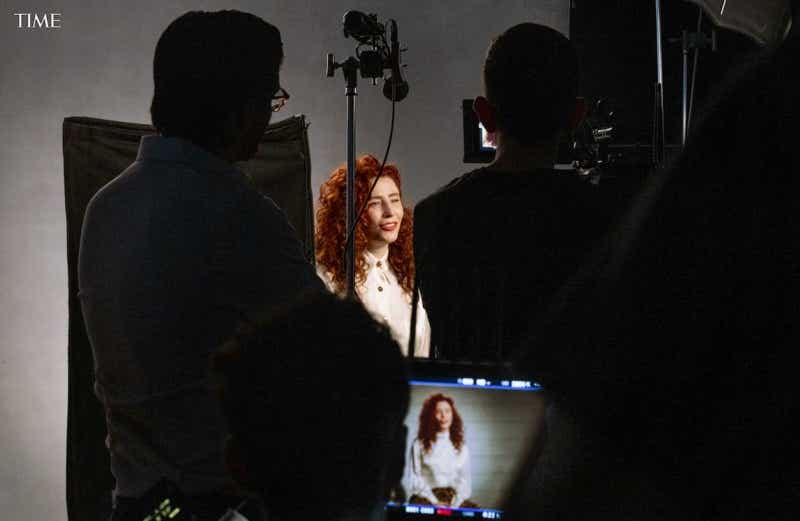How the Oscars shut-out of female directors inspired Alma Har’el to honor overlooked women in history
In an As Told To essay, filmmaker Alma Har’el talks about the inspiration behind the TIME 100 Women of the Year project.
I was born in Tel Aviv, where God-worshipping men give thanks in their morning prayers for the gifts of sight and freedom, and one more thing: not being made a woman. As a filmmaker, I’ve found myself thinking a lot about that prayer, especially in the past year as I’ve seen women overlooked in my industry.
In a year where so many films were directed by women, and dozens of them were very highly reviewed and successful at the box office, female directors were again shut out during the Academy Awards. I wanted to look beyond myself and my story — and found comfort and inspiration in all of the women who have not been celebrated enough. The women who were written out of history, or are household names but haven’t received the honors they’ve deserved.
TIME magazine has always been very influential, and something I’ve enjoyed from afar over the years. They have celebrated men for decades, with their “Man of the Year” issues. It wasn’t until 1999 that the series transitioned to “Person of the Year.” That didn’t seem right.
I approached TIME with the idea to look back at a century’s worth of women of the year: What would it have looked like if we had a “Woman of the Year,” every year, and how would that affect the stories we know today? We joined forces and worked for months with TIME’s stellar editorial team, as well as P&G, who joined me as co-producers to document the making of this historical moment.
The result is TIME 100 Women of the Year. One hundred TIME covers honoring women who’ve changed our world over the last century, as well as a short documentary we will launch later on. I’m grateful that TIME opened their process to include a committee we summoned — Lena Waithe, Katie Couric, Mj Rodriguez, Amanda Nguyen, Elaine Welteroth, Soledad O’Brien, Zazie Beetz, and Nancy Gibbs — women from different backgrounds who helped us make this list inclusive to all women. Each of these gifted women have all created history in their own way and we couldn’t have done it without them. (You can read about the committee here.)
I hope people will be curious about these covers and discover the impact of women like Malala Yousafzai on our 2009 cover, or the three women — Patrisse Cullors, Alicia Garza and Opal Tometi — who founded Black Lives Matter and are featured on our 2013 cover. Our 1944 cover features Recy Taylor. She was raped by a group of white men, and filed a lawsuit against them. She didn’t win, but her case is the fire that helped start the civil rights movement and inspired many black women to stand up and seek justice.
For me, discovering and learning more about women we don’t often know about or celebrate enough has been one of the more rewarding aspects of this project. I remember only a few years ago I was surprised to learn about many women trailblazers in my own industry. Women like Alice Guy-Blaché. We couldn’t actually include her because most of her work was done before 1920, but she was the first woman to start a film studio, before Hollywood even existed, and directed over a 1,000 films — only to be written out of history.
We can’t let the collective narrative erase women and treat them as second class contributors to our society. I hope this project inspires women and men to see that women’s history is human history.
Alma Har’el is a filmmaker and the director of the acclaimed 2019 film, Honey Boy.
This essay was As Told To the Wake-Up Call editors.
This originally appeared on Medium.com









